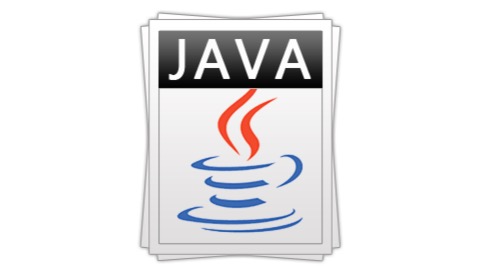Thread.interrupt真的能中断线程吗
在平时的开发过程中,相信都会使用到多线程,在使用多线程时,大家也会遇到各种各样的问题,今天我们就来说说一个多线程的问题——线程中断。在 java中启动线程非常容易,大多数情况下我是让一个线程执行完自己的任务然后自己停掉,但是有时候我们需要取消某个操作,比如你在网络下载时,有时候需 要取消下载。实现线程的安全中断并不是一件容易的事情,因为Java并不支持安全快速中断线程的机制,这里估计很多同学就会说了,java不是提供了Thread.interrupt 方法中断线程吗,好吧,我们今天就从这个方法开始说起。
但是调用此方法线程真的会停止吗?我们写个demo看看就知道了。
- public class Main {
- private static final String TAG = "Main";
- public static void main(String[] args) {
- Thread t=new Thread(new NRunnable());
- t.start();
- System.out.println("is start.......");
- try {
- Thread.sleep(3000);
- } catch (InterruptedException e) {
- }
- t.interrupt();
- System.out.println("is interrupt.......");
- }
- public static class NRunnable implements Runnable
- {
- @Override
- public void run() {
- while(true)
- {
- System.out.println("我没有种中断");
- try {
- Thread.sleep(1000);
- } catch (InterruptedException e) {
- }
- }
- }
- }
- }
如果interrutp方法能够中断线程,那么在打印了is interrupt…….之后应该是没有log了,我们看看执行结果吧
is start.......
我没有种中断
我没有种中断
我没有种中断
我没有种中断
我没有种中断
is interrupt.......
我没有种中断
我没有种中断
我没有种中断
我没有种中断
我没有种中断
....
通过结果可以发现子线程并没有中断
所以 Thread.interrupt() 方法并不能中断线程,该方法仅仅告诉线程外部已经有中断请求,至于是否中断还取决于线程自己。在Thread类中除了interrupt() 方法还有另外两个非常相似的方法:interrupted 和 isInterrupted 方法,下面来对这几个方法进行说明:
-
interrupt此方法是实例方法,用于告诉此线程外部有中断请求,并且将线程中的中断标记设置为true -
interrupted此方法是类方法,测试当前线程是否已经中断。线程的中断状态 由该方法清除。换句话说,如果连续两次调用该方法,则第二次调用将返回 false(在***次调用已清除了其中断状态之后,且第二次调用检验完中断状态前,当前线程再次中断的情况除外)。 -
isInterrupted此方法是实例方法测试线程是否已经中断。线程的中断状态 不受该方法的影响。 线程中断被忽略,因为在中断时不处于活动状态的线程将由此返回 false 的方法反映出来
处理线程中断的常用方法
设置取消标记
还是用上面的例子,只不过做了些修改
- public static void main(String[] args) {
- NRunnable run=new NRunnable();
- Thread t=new Thread(run);
- t.start();
- System.out.println("is start.......");
- try {
- Thread.sleep(3000);
- } catch (InterruptedException e) {
- }
- run.cancel();
- System.out.println("cancel ..."+System.currentTimeMillis());
- }
- public static class NRunnable implements Runnable
- {
- public boolean isCancel=false;
- @Override
- public void run() {
- while(!isCancel)
- {
- System.out.println("我没有种中断");
- try {
- Thread.sleep(10000);
- } catch (InterruptedException e) {
- }
- }
- System.out.println("我已经结束了..."+System.currentTimeMillis());
- }
- public void cancel()
- {
- this.isCancel=true;
- }
- }
执行结果如下:
is start.......
我没有种中断
cancel ...1438396915809
我已经结束了...1438396922809
通过结果,我们发现线程确实已经中断了,但是细心的同学应该发现了一个问题,调用cancel方法和***线程执行完毕之间隔了好几秒的时间,也就是说线程不是立马中断的,我们下面来分析一下原因:
子线程退出的条件是while循环结束,也就是cancel标示设置为true,但是当我们调用cancel方法将calcel标记设置为true 时,while循环里面有一个耗时操作(sleep方法模拟),只有等待耗时操作执行完毕后才会去检查这个标记,所以cancel方法和线程退出中间有时 间间隔。
通过interrupt 和 isinterrupt 方法来中断线程
- public static void main(String[] args) {
- Thread t=new NThread();
- t.start();
- System.out.println("is start.......");
- try {
- Thread.sleep(3000);
- } catch (InterruptedException e) {
- }
- System.out.println("start interrupt..."+System.currentTimeMillis());
- t.interrupt();
- System.out.println("end interrupt ..."+System.currentTimeMillis());
- }
- public static class NThread extends Thread
- {
- @Override
- public void run() {
- while(!this.isInterrupted())
- {
- System.out.println("我没有种中断");
- try {
- Thread.sleep(10000);
- } catch (InterruptedException e) {
- Thread.currentThread().interrupt();
- }
- }
- System.out.println("我已经结束了..."+System.currentTimeMillis());
- }
- }
- }
运行结果如下:
is start.......
我没有种中断
start interrupt...1438398800110
我已经结束了...1438398800110
end interrupt ...1438398800110
这次是立马中断的,但是这种方法是由局限性的,这种方法仅仅对于会抛出InterruptedException 异常的任务时有效的,比如java中的sleep、wait 等方法,对于不会抛出这种异常的任务其效果其实和***种方法是一样的,都会有延迟性,这个例子中还有一个非常重要的地方就是cache语句中,我们调用了Thread.currentThread().interrupt() 我们把这句代码去掉,运行你会发现这个线程无法终止,因为在抛出InterruptedException 的同时,线程的中断标志被清除了,所以在while语句中判断当前线程是否中断时,返回的是false.针对InterruptedException 异常,我想说的是:一定不能再catch语句块中什么也不干,如果你实在不想处理,你可以将异常抛出来,让调用抛异常的方法也成为一个可以抛出InterruptedException 的方法,如果自己要捕获此异常,那么***在cache语句中调用 Thread.currentThread().interrupt(); 方法来让高层只要中断请求并处理该中断。
对于上述两种方法都有其局限性,***种方法只能处理那种工作量不大,会频繁检查循环标志的任务,对于第二种方法适合用于抛出InterruptedException的代码。也就是说***种和第二种方法支持的是支持中断的线程任务,那么不支持中断的线程任务该怎么做呢。
例如 如果一个线程由于同步进行I/O操作导致阻塞,中断请求不会抛出InterruptedException ,我们该如何中断此线程呢。
处理不支持中断的线程中断的常用方法
改写线程的interrupt方法
- public static class ReaderThread extends Thread
- {
- public static final int BUFFER_SIZE=512;
- Socket socket;
- InputStream is;
- public ReaderThread(Socket socket) throws IOException
- {
- this.socket=socket;
- is=this.socket.getInputStream();
- }
- @Override
- public void interrupt() {
- try
- {
- socket.close();
- }catch(IOException e)
- {
- }finally
- {
- super.interrupt();
- }
- super.interrupt();
- }
- @Override
- public void run() {
- try
- {
- byte[]buf=new byte[BUFFER_SIZE];
- while(true)
- {
- int count=is.read(buf);
- if(count<0)
- break;
- else if(count>0)
- {
- }
- }
- }catch(IOException e)
- {
- }
- }
- }
- }
例如在上面的例子中,改写了Thread的interrupt 方法,当调用interrupt 方法时,会关闭socket,如果此时read方法阻塞,那么会抛出IOException 此时线程任务也就结束了。
以上方法是通过改写线程的interrupt 方法实现,那么对于使用线程池的任务该怎么中断呢。
改写线程池的newTaskFor方法
通常我们向线程池中加入一个任务采用如下形式:
- Future<?> future=executor.submit(new Runnable(){
- @Override
- public void run() {
- }
- });
- 取消任务时,调用的是future的cancel方法,其实在cancel方法中调用的是线程的interrupt方法。所以对于不支持中断的任务cancel也是无效的,下面我们看看submit方法里面干了上面吧
- public Future<?> submit(Runnable task) {
- if (task == null) throw new NullPointerException();
- RunnableFuture<Void> ftask = newTaskFor(task, null);
- execute(ftask);
- return ftask;
- }
- 这里调用的是AbstractExecutorService 的newTaskFor方法,那么我们能不能改写ThreadPoolExecutor的newTaskFor方法呢,接下来看我在处理吧
- 定义一个基类,所有需要取消的任务继承这个基类
- public interface CancelableRunnable<T> extends Runnable {
- public void cancel();
- public RunnableFuture<T> newTask();
- }
- 将上面的ReaderThread改为继承这个类
- public static class ReaderThread implements CancelableRunnable<Void>
- {
- public static final int BUFFER_SIZE=512;
- Socket socket;
- InputStream is;
- public ReaderThread(Socket socket) throws IOException
- {
- this.socket=socket;
- is=this.socket.getInputStream();
- }
- @Override
- public void run() {
- try
- {
- byte[]buf=new byte[BUFFER_SIZE];
- while(true)
- {
- int count=is.read(buf);
- if(count<0)
- break;
- else if(count>0)
- {
- }
- }
- }catch(IOException e)
- {
- }
- }
- @Override
- public void cancel() {
- try {
- socket.close();
- } catch (IOException e) {
- }
- }
- @Override
- public RunnableFuture<Void> newTask() {
- return new FutureTask<Void>(this,null)
- {
- @Override
- public boolean cancel(boolean mayInterruptIfRunning) {
- return super.cancel(mayInterruptIfRunning);
- if(ReaderThread.this instanceof CancelableRunnable))
- {
- ((CancelableRunnable)(ReaderThread.this)).cancel();
- }else
- {
- super.cancel(mayInterruptIfRunning);
- }
- }
- };
- }
- }
当你调用future的cancel的方法时,它会关闭socket,最终导致read方法异常,从而终止线程任务。































